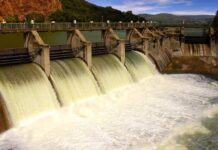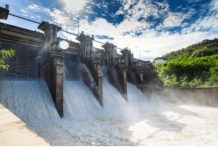In one of the largest energy-efficiency investments ever undertaken in Brazil, a public utility will use a $128 million loan from the Inter-American Development Bank (IDB) to partly finance the rehabilitation and modernization of two large hydroelectric complexes in order to increase power production, lower maintenance costs and double the service life of the facilities.
The two facilities, Furnas Hydroelectric Plant and Luiz Carlos Barreto de Carvalho Hydroelectric Plant, are owned and operated by Furnas Centrais Elétricas S.A. (Furnas), one of Brazil’s largest energy utilities.
Operating since 1963 and 1969, the plants were designed to produce a combined 2,266 megawatts of electricity and are already long past their intended service lifespan of 30 years. As a result of normal wear and tear, their turbines require increasingly frequent and costly repairs, reducing power production at a time when Brazil’s electricity demand is growing at 5.2 percent per year.
Building new electricity generation plants to make up for these shortfalls would cost up to four times more per megawatt than refurbishing the existing facility. Furnas opted to embark on a $600 million program to completely restore the turbines, generators and mechanical equipment and to modernize the control, supervision and protection systems at the plants, along with related equipment. These improvements should enable the plants to continue operating beyond 2040.
When completed, the program is expected to have cost $270,000 per megawatt of electricity generation capacity. By contrast, building new facilities capable of generating the same amount of electricity as the refurbished damns would cost at least $1.25 million per megawatt, and possibly much more.
“By extending the life of the existing dams and infrastructure, this project enables Furnas to produce low-cost electricity for the next generation at a fraction of the cost required to build new plants,” said Sylvia Larrea, the IDB’s project team leader. “This also avoids the social or environmental disruptions that come with new construction, and it enables Brazil to sustain its low carbon footprint in power generation while reducing pressure to develop new sources of energy.”
Alejandro Melandri, the IDB´s co-team leader on the project, said Furnas’ approach is likely to be replicated by other utilities throughout the region. “Latin America and the Caribbean depend on hydroelectricity for more than 60 percent of their total electricity production, more than any other region in the world,” he said. “But today more than 30 percent of the region’s large hydroelectric complexes are above 30 years old, so refurbishing is emerging as a very attractive option.”
Last year, the IDB approved a $700 million loan to refurbish turbines in Venezuela’s Guri hydroelectric complex, and several similar projects are now in the Bank’s pipeline. The IDB loan is for 20 years, with a 3.5-year grace period and an interest rate based on LIBOR. Furnas is financing the balance of the project from its own resources.










































